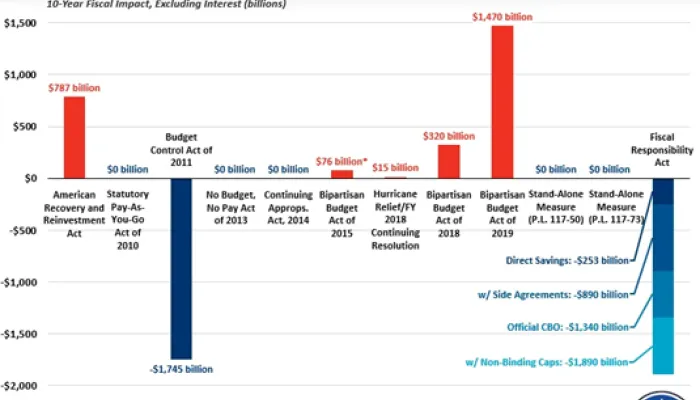Bad Budget Concepts and The Case of Student Loans
Sometimes, the way we score certain items in the budget leads to sub-optimal policy choices. For example, as we explained recently, the long-term care insurance included in the Health Care reform bills appears to save tens of billions of dollars -- simply because it collects insurance premiums for five years before paying out benefits -- when in reality this provision costs money.
Our friends over at Ed Money Watch have pointed to a similar phenomenon for a student loan bill.
The bill would basically let students with high-cost private loans exchange them for government-backed student loans. This should impose a new cost on the federal government, since it must take on the risk of these borrowers. But instead, CBO scores it as saving $9.6 billion.
Under this scenario, everyone supposedly wins big. As Jason Delisle explains:
Most eligible borrowers would jump at the debt swap offer given that federal loans generally have more generous terms than private loans. Student loan companies also stand to gain to the extent that the government pays them more than what their loans are worth in the private market. Colleges, particularly for-profit colleges, on the hook for a portion of private student loan default costs will be pleased to see their former students reduce their debt costs. And taxpayers win because they would earn interest totaling a net $9.6 billion off the new government loans.
But of course, we at the Committee for a Responsible Federal Budget know that there are no free lunches (emphasis added):
The $9.6 billion in direct loan earnings are an illusion... outdated budget rules make federal loan programs such as the Federal Family Education Loan program and the direct loan program in particular appear less expensive than they would if private market estimates were used... CBO, to its credit, recognized the intellectual debate surrounding federal budget rules and the inherent “everybody wins” problem with loan cost estimates like that for the debt swap bill. Can a bill that subsidizes both borrowers and lenders also earn money for taxpayers? In two paragraphs of footnotes CBO included with its estimate, it explained that when private market values and risk assessments are incorporated into the estimate, the Private Student Loan Debt Swap Act costs taxpayers $700 million over 10 years. A $700 million cost is a remarkable difference from $9.6 billion in savings, and shows the value of having CBO continue to publish market cost estimates for student loan proposals.
Just because budget scoring rules make it so the bill appears to save almost $10 billions, though, doesn't mean politicians should use this money to pay for something else. Just like with the CLASS Act, we don't believe this to be a legitimate offset.


